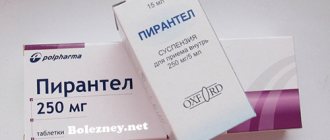Conjunctivitis is an eye disease that can include different categories of lesions, from common pollen allergies to infections. Characteristic symptoms include redness of the sclera, tearing, burning/itching, sensation of a foreign object in the eye, and the appearance of purulent discharge.
Often the problem goes away on its own, since the body has the ability to heal on its own, so many do not pay due attention to the manifestations of the disease. But do not underestimate this disease. In addition to unpleasant symptoms, conjunctivitis in an advanced state develops into more acute forms, and the affected eyes become vulnerable to the development of serious diseases. To prevent this from happening, the cause should be eliminated at the stage of its occurrence.
The most common remedy for combating conjunctivitis is eye drops. In some cases, an integrated approach is used, where the use of ointments is added to instillation. But most often it is enough to take a course of instillation to get rid of the disease.
Eye drops differ in composition, which requires the need to make an accurate diagnosis - each substance is responsible for a specific pathogen. Therefore, you should not ignore consulting a doctor.
There are three types of conjunctivitis:
- Bacterial.
- Viral.
- Allergic.
Depending on the type of disease, one or another medication is prescribed.
Drops are divided into four groups:
- Against bacterial diseases.
Antibiotic-based products destroy bacteria and help fight the manifestations of their activity. However, there are a huge number of harmful microorganisms, and there is no universal remedy that can fight them all. Therefore, if the drops do not bring relief on the first day, they will have to be replaced. - Against viruses.
The active substance of the drugs has the ability to eliminate the virus and reduce the intensity of symptoms. Such drops additionally have a regenerating and calming effect on the conjunctiva. - Against allergies.
Antihistamines help eliminate itching, redness, and burning in the eyes if the cause of all this is an allergy. - Complex.
The fourth group has a complex effect. Products may contain several active ingredients that solve various problems, for example, help fight viral and allergic reactions.
In addition to conjunctivitis, these remedies treat and prevent other diseases. Some of them are used after operations or mechanical damage to the organs of vision. Also, when prescribing, the properties of the active substance and the patient’s condition are taken into account. Different drops are selected for adults, children, newborns, pregnant and lactating women. Therefore, it is so important to accurately establish a diagnosis and take into account the individual characteristics of the body. Only a specialist can do this.
We present the rating of drops for conjunctivitis 2019. The best 13 products that were selected by our experts based on user reviews and ratings.
There are contraindications, be sure to consult your doctor!
| Rating (2019) | Prices, ₽ | A country |
| The best drops for conjunctivitis for adults | ||
| 1. Vitabact | from 350₽ | France |
| 2. Okomistin | from 150₽ | Russia Ukraine |
| 3. Sofradex | from 300₽ | India |
| 4. Dancil | from 130₽ | India |
| 5. Sulfacyl-Sodium | from 30₽ | Russia |
| The best drops for conjunctivitis for children | ||
| 1. Phloxal | from 170₽ | Germany |
| 2. Okumetil | from 200₽ | Egypt |
| 3. Tsipromed | from 100₽ | India |
| 4. Tobrex | from 160₽ | Belgium |
| 5. Hyphenation | from 50₽ | Russia |
| The best drops for conjunctivitis for pregnant women | ||
| 1. Aktipol | from 250₽ | Russia |
| 2. Ophthalmeron | from 250₽ | Russia |
| 3. Allergordil | from 400₽ | Germany |
Indications for use
The main purpose of eye drops for conjunctivitis is to relieve inflammation, suppuration, irritation, soreness, lacrimation, and itching in the eye.
Often with conjunctivitis, dryness and a feeling of sand in the eyes are bothersome. Also, eye drops for adults and children can differ significantly! Main indications for treatment with drops:
- conjunctivitis (viral, bacterial, allergic);
- inflammation of the mucous membrane;
- toxic poisonous influence from the outside;
- avitaminosis;
- overwork of the eye socket, eyelids;
- constant contact with acids and alkalis when a person works in hazardous industries;
- chronic respiratory diseases;
- abuse of certain medications;
- prolonged exposure to ultraviolet radiation;
- improper wearing of contact lenses;
- use of low-quality cosmetics;
- other eye diseases (blepharitis, keratitis, iridocyclitis, keratoconjunctivitis).
Indications for the use of drops for conjunctivitis in adults
The inflammatory process of the conjunctiva is a reason for using eye drops. Symptoms help identify the disease :
- pain in the eye area;
- excessive secretion of tear fluid;
- low tolerance to bright light;
- copious formation of purulent discharge;
- redness of the eyes.
Detection of these signs is a reason to consult a doctor. Only he is able to determine what is better to treat conjunctivitis in an adult - drops will be more effective or other dosage forms.
When adults are prescribed antibiotic drops for conjunctivitis
Drops for conjunctivitis in adults with an antibiotic are prescribed when a bacterial infection is detected. They are instilled every 4 hours strictly according to medical recommendations. In some cases, allergies may occur to medications. If this happens, you need to select another drug together with your ophthalmologist.
The inflammatory process of conjunctivitis is often accompanied by suppuration. In this case, before using the drops, you need to rinse your eyes with an antiseptic solution. The instillation procedure must be carried out extremely carefully so as not to injure the surface of the eye and prevent the spread of infection.
Is it permissible to use drops for conjunctivitis during pregnancy?
Pregnancy is a time when certain medications are prohibited for use. They are absorbed into the bloodstream and can harm the unborn child in the early stages of pregnancy. If conjunctivitis is diagnosed after the first trimester of pregnancy, it is permissible to use almost any drugs for treatment (except those consisting of glucocorticoids). Albucid, Oftalmoferon, Vigamox are the drops that are most often prescribed.
Please note: Any medications can only be used for medical purposes. Self-medication will only worsen the condition of the visual organs. The need to adjust the treatment regimen and dosage of the drug is also discussed with a specialist.
Effective eye drops for conjunctivitis
Pharmacies offer a large selection of eye drops for conjunctivitis:
- viral conjunctivitis is treated with antiviral eye drops (Poludan, Oftalmoferon, Albucid, Floxal, Tebrofen, Florenal, Interferon alfa-2) to prevent subsequent replication of the viral infection and spread through tissues;
- bacterial conjunctivitis - antibiotics (Albucid, Levomycetin, Floxal, Tobrex, Tsipromed);
- allergic - antiallergenic drugs (Allergodil, Cromohexal, Opatanol, Lecrolin, Claritin);
- mixed (bacterial and viral) - antibacterial eye drops (Tsiprolet, Tsipromed, Tobrex, Normax, Albucid).
Universal drops are antimicrobial, helping in the treatment of all forms of conjunctivitis.
If purulent discharge from the eyes is observed, then the best remedies are Tobrex, Oftadek, Levomycetin, Gentamicin, Albucid. List of effective and inexpensive drugs for conjunctivitis in drops:
Levomycetin
Levomycetin is an affordable antimicrobial agent. Prescribed for bacterial conjunctivitis, it quickly stops and suppresses the proliferation of pathogenic microflora. Dosage for adults – 1 drop 2 times a day. The course of treatment is 14-16 days. Contraindications: pregnancy, children under 1 year. Acceptable adverse reactions: itching in the eye, tearing, skin rash.
Tobrex
Tobrex is an antibiotic based on tobramycin. Shows activity against staphylococci, streptococci, diphtheria coli.
Sulfacyl sodium
Sulfacyl sodium is an antimicrobial composition with antiseptic activity. Suppresses the activity of bacteria without negatively affecting the human body. Not considered an antibiotic. Indicated in the treatment of bacterial eye infections (blepharitis, keratitis, conjunctivitis). Can be prescribed to newborns up to 1 year of age for blenorrhea, inflammation of the eyelids, and to adults for the complex treatment of eye infections.
Tsipromed
Tsipromed is from the group of fluoroquinolones and contains active ciprofloxacin. Suppresses many microorganisms, quickly relieves inflammation, fights infection in the eye and appendages. Indications: anterior uveitis, blepharitis, dacryocystitis, conjunctivitis, keratitis.
Vitabact
Vitabact is a drug with a bacterial effect from the biguanide group. Fights certain types of fungi and viruses. Treats keratitis, conjunctivitis (acute, chronic) caused by microorganisms.
Albucid
Albucid to suppress bacterial microflora in the eye (gonococci, streptococci, staphylococci, chlamydia). Contains active sulfacetamide. Adults are prescribed a solution of 23%, children – 20%.
Tsiprolet
Tsiprolet is an antimicrobial composition from the group of fluoroquinolones. Prescribed for many ophthalmological diseases (acute and subacute conjunctivitis, blepharitis, corneal ulcer, chronic meibomitis, dacryocystitis), visual defects. Actively affects gram-positive and gram-negative bacteria. It helps even when antibiotics are powerless to suppress E. coli, streptococcus, chlamydia, and diphtheria bacteria. Drops can be instilled into children from 1 year of age. The dosage is selected by the doctor taking into account the age, form and nature of the disease.
Oftalmoferon
Ophthalmoferon (Interferon Alpha 2) with immunostimulating, antiviral properties. Begins an active fight against many viral diseases.
Poludan
Poludan is an endogenous interferon. Treats herpetic keratitis, uveitis, conjunctivitis and adenovirus infection of the eyes, provoking an increase in the synthesis of cytokines in the lacrimal gland.
Aktipol
Aktipol is an antiviral drug with antioxidant properties. It contains para-aminobenzoic acid and vitamin b10, which begin to produce its own Interferon in the human body to perform the regenerative functions of tissues.
Cromohexal
Cromohexal is an anti-allergy drug that reduces the production of mast cells. Contains sodium cromoglycate. Prescribed for allergic conjunctivitis, keratitis. Allowed for children from 2 years old.
Allergodil
Allergodil is a powerful drop to block H1 histamine receptors and relieve any allergy symptoms. Does not lead to side effects. Quickly eliminates itching, lacrimation, and redness of the conjunctiva.
Lecrolin
Lecrolin is an ethical composition made from sodium cromoglycate. Eliminates itching, burning in allergies, keratitis, keratoconjunctivitis caused by negative external influences (chemical burns, dust).
Opatanol
Opatanol is an antihistamine with a local effect that relieves allergy symptoms. Children over 3 years old are allowed to use it.
Rating of the best drops for conjunctivitis
The inclusion of all these drugs in the rating was made possible as a result of a careful study of customer reviews. When analyzing them, we paid attention to the following nuances:
- Treatment effectiveness;
- Composition – active and auxiliary components;
- Package volume;
- Convenient bottle and dropper;
- Recommended dosages;
- Versatility – for what diseases can it be used;
- Duration of the course for successful recovery;
- Adverse reactions;
- Number of contraindications;
- Speed of action.
One of the important criteria was the cost of the drops and its relationship with quality, as well as the country of production.
We also advise you to pay attention to the best vitamins for the eyes. Together with the drops, they will help you recover faster from conjunctivitis.
The best vitamins for women over 30
Eye drops for conjunctivitis for children
The pharmaceutical industry does not produce eye drops specifically for children, and not all of them are suitable for a growing body. Prescriptions are made only by a doctor after identifying the etiology of the disease. Age and existing symptoms are also taken into account.
Children are shown gentle local formulations that do not cause harm to the body:
- antihistamine drops for diseases caused by an allergic reaction;
- antiviral agents in case of eye inflammation of viral origin;
- antibiotics for infections caused by bacteria.
It happens that conjunctivitis is detected in children under 1 year of age, when the temperature rises, the eyes become swollen and red, and there is copious discharge. The reason is allergies and a low level of immune defense, unable to cope with the onslaught of pathogenic bacteria from the outside.
Children are sociable and inquisitive. They like to pull foreign objects into their mouth and eyes or rub them with unwashed hands.
Viral conjunctivitis is often picked up by children when communicating with peers in public places or by newborns when passing through the birth canal, acquiring an infection of gonococci, streptococci, and chlamydia from the mother.
The main treatment is antimicrobial drops with dosages prescribed by the treating ophthalmologist. Approved drops for conjunctivitis for children:
- for newborns, children under 1 year - Oftalmoferon, Futsitalmic, Aktipol, Tobrex, Floxal, Levomycetin, Albucid, Vitabact;
- from 1 year – Ciprofloxacin;
- from 2 years - Oftan;
- from 3 years – Opatanol;
- from 4 years - Azelastine, Lecrolin, Cromohexal, Allergodil.
It happens that a child catches inflammation of the conjunctiva after swimming in a polluted body of water. Coccal flora is a common cause of an outbreak of bacterial inflammation with the appearance of profuse green, yellow discharge from the eyes. Caring mothers immediately begin to intensively apply eye drops to their eyes, literally healing them and forgetting about the consequences. Dosages cannot be exceeded and this will not speed up the healing process. The body's immune defense must be formed independently, so the child must gradually get used to contact with microbial microflora.
The average dosage for washing the eyes with antiseptic solutions is 1 drop, rinse the eyes 2 times a day. If you suspect conjunctivitis, you should contact your doctor to select safe treatment. For bacterial conjunctivitis, antibacterial drops are prescribed: Albucid, Tobrex, Levomycetin, Floxal.
If a child catches the herpes virus or adenovirus, which provokes the development of viral inflammation of the conjunctiva, accompanied by high fever, lacrimation, and watery discharge from the eyes, then children are prescribed antiviral drugs based on age: Ophthalmoferon, Actipol, Oftan Idu. For allergic conjunctivitis - antihistamine drops (Lecrolin, Allergodil, Azelastine, Opatanol, Cromohexal).
Antiallergic drops are not prescribed to children, because according to the instructions, they are completely contraindicated up to a certain age, and clinical safety testing has not been carried out.
Drops for children
In pediatric practice, the following medications are considered the safest for conjunctivitis: Tobrex, Oftalmoferon, Tobris, Tsipromed and its analogues for the active substance, Levomycetin, Sulfacyl Sodium. All drugs are used strictly as prescribed by the doctor.
Tobrex
Antibiotic drops are used for bacterial conjunctivitis. Safe, no age restrictions. After instillation, allergic manifestations are possible in the form of itching, redness of the installation site, and increased lacrimation.
Oftalmoferon
It is used in pediatric practice from birth as a primary remedy for viral conjunctivitis and an auxiliary measure for the treatment of bacterial infections. The drops are safe and do not cause unwanted reactions. The bottle must be stored in the refrigerator.
Tobris
A cheaper analogue of Tobrex, which has an antibacterial effect.
Tsipromed
It is used for bacterial conjunctivitis in children from one year of age. Known analogues of the drug: Ciprofloxacin, Tsiprolet.
Levomycetin
Used to treat inflammatory eye diseases in children from 4 weeks.
More information about the drug can be found here
Sulfacyl Sodium
Area of application: bacterial conjunctivitis, gonorrheal diseases and blenorrhea in newborns. Can be used from birth.
Side effects
Many eye drops effectively and quickly relieve inflammation, redness, swelling, and eye fatigue. If you use drugs often and overestimate the dose, it is rare, but side effects still happen:
- addiction;
- itching, burning, irritation, swelling;
- vomiting, nausea;
- rash on the body;
- dry eyes.
Long-term use of eye drops can provoke a fungal infection and aggravate the situation. Rarely, but possible swelling of the eyelids and cornea, the manifestation of allergic reactions.
Conjunctivitis is an inflammation of the mucous membrane of the eye (conjunctiva). When purchasing drops at a pharmacy on your own without a doctor’s prescription, it is important to understand that pharmacists recommend drops at their own discretion and may not predict a specific case and may dispense an ineffective remedy for other purposes. For example, drops with bacterial properties are unlikely to help with allergic and viral conjunctivitis. Although, with the right, timely approach to treatment, any form of this disease can be successfully and quickly treated.
Many patients ask: what is better – drops or gel for conjunctivitis? The drops are absorbed faster into the conjunctival space, which means they have an effect in a matter of minutes. The gel envelops the cornea and conjunctiva, creating a protective film for 12 hours, preventing re-entry of infection. If the doctor prescribes complex treatment, you need to use both remedies. The main thing: remember that viral conjunctivitis is contagious.
To speed up the recovery process, it is important for patients not to neglect hygiene procedures, use only individual personal items, wash their hands with soap and avoid touching their eyes. Children with bacterial or viral conjunctivitis are recommended to undergo treatment at home, without attending kindergartens and schools. The main thing is not to provoke complications leading to vision loss.
Disease prevention
To avoid bacterial, viral or allergic conjunctivitis, it is recommended to use some drops for preventive purposes. This can also be done to prevent exacerbation or relapse of the disease.
Have you used drops to treat conjunctivitis?
Not really
So, as a preventive measure, you need to instill 1 drop into each eye.
Frequency of use: 1-2 times a day. For adults, the following drugs with the following names are suitable:
- Aktipol.
- Oftalmoferon.
- Phloxal.
- Oftan I'm coming.
- Levomycetin.
- Sulfacyl sodium, etc.
Conjunctivitis as a disease
The task of the conjunctival membrane of the eye is to protect against the adverse effects of external factors. A thin film protects the eyeball from the destructive effects of pathogenic microorganisms, protects from injury by foreign objects, and moisturizes. If the functions of the protective film are impaired, it becomes inflamed.
- The acute type of pathology is characterized by rapid development with pronounced symptoms of purulent exudate and soreness of the reddened conjunctiva. When starting to treat inflammation, it is important to determine the nature of the pathology to select eye drops.
- The danger of chronic conjunctivitis is the frequent absence of symptoms during a long (sluggish) course of the disease. In addition to pathogenic pathogens, the development of a chronic process can be caused by diseases of other organs, but therapy for conjunctivitis is not complete without the use of eye drops.
General rules for using eye drops
Regardless of what drops the doctor prescribed for conjunctivitis, this must be done strictly according to the rules to maintain the effectiveness of the medicine:
- Before the procedure, wash your hands with soap.
- When instilling, do not allow the tip of the pipette to come into contact with the body.
- After each use, the pipette is washed and dried.
- If you need to use more than 1 type of drops, they are instilled at intervals of 15-20 minutes.
- Before using the medicine, it is advisable to rinse the eyes with a solution (Miramistin, tea leaves or other available means), especially if a purulent infection occurs.
- To achieve maximum penetration of the medicine, take the correct position, throwing your head back, lying on the bed.
- The lower eyelid is pulled back slightly and the eyes are rolled up.
- With the second hand, drop the required amount of product into the area of the inner corner of the eye, trying to get into the formed pouch of the lower eyelid.
- Close your eyes and remove any remaining product with a clean cotton pad.
After the procedure, you should not immediately read, watch TV, or try to focus your eyes.
For allergic form
If the inflammation is caused by an allergy, the doctor will select eye drops with an antiallergic effect. Quite often people encounter this problem in spring and early summer, during the flowering of bushes and trees. But the cause of illness can be household dust or allergenic foods.
Eye drops for allergic conjunctivitis should be prescribed by a doctor. Such drugs not only eliminate allergy symptoms, but also reduce the inflammatory process. The most commonly prescribed medications are:
- Opatanol;
- Lecrolin;
- Dexamethasone drops.
Allergy treatment is supplemented with systemic antihistamines. The most commonly prescribed drugs are the latest generations, which have few contraindications and side effects - Cetrin and Tavegil. In some cases, it is advisable for the patient to receive injections of Suprastin.
If allergic conjunctivitis is suspected, the patient is recommended to undergo allergy tests. This will allow you to determine the cause of the disease as accurately as possible.
Rules of application
For therapy to give a positive result, you must adhere to certain rules:
- antibiotics in the form of drops are used in the daytime, ointments are applied at night. This way you can achieve the best therapeutic effect;
- do not use blindfolds: purulent discharge must be allowed to drain freely;
- You should not use drugs of different forms at the same time. In this case, their therapeutic effect can be weakened and the risk of negative consequences can increase. If it is necessary to use them together, antibiotics are used at intervals of 20-30 minutes;
- the treatment course should be completed to the end, even if symptoms subside;
- If after the completed course of treatment there is no positive effect, you should consult a specialist. Most likely, you will need to replace the antibiotic with another one.
Tablet forms
Antibiotics in tablets are most often not used for inflammation of the conjunctiva. Bacterial eye infections are treated with topical remedies. However, in special cases, the ophthalmologist may prescribe systemic agents.
Most often, antibiotics in tablets or capsules are prescribed for gonococcal or chlamydial forms of the disease, as well as pathologies accompanied by the formation of follicles in the eye cavity or the penetration of blood vessels into the cornea.
Drops and ointments
Antibiotics in drops and ointments are the main method of treating bacterial inflammation of the conjunctiva.
Most often, experts recommend combining ointments with drops. The drops are administered during the day, every few hours.
At night, ointments are placed in the conjunctival sac, which exert their therapeutic effect during sleep.
Allergic conjunctivitis - treatment, symptoms in children and adults
The general allergization of the population of Russia, and not only our country, is frightening with its aggressive spread. Nowadays, it is difficult to find a person who has not at least once experienced some kind of allergic reaction - food, dust, allergies to animal fur, to flowering plants, medicines, household and cosmetic-perfume chemicals, to alcohol, the sun and even cold .
Allergies can also manifest themselves on a person’s skin, and affect the functions of the respiratory system, the digestive tract, manifest as a runny nose and allergic conjunctivitis. Treatment of allergies is a very difficult task, since the mechanism of allergy occurrence is complex, medicine cannot yet correct the changes that have occurred in the immune system, but can only alleviate its symptoms. So, how to treat allergic conjunctivitis?
- Allergic conjunctivitis is one of the variants of the body’s allergic reaction to external irritants.
- In allergic conjunctivitis, symptoms can be seasonal or constant (all year round). The disease can occur acutely, subacutely or chronically.
- For allergic conjunctivitis, treatment has 3 main principles: isolation from the allergen
- treatment with eye drops - mast cell stabilizers, antihistamines, and in very severe cases, corticosteroid drops
- immunotherapy.
- Hay conjunctivitis
Features of using eye drops
Eye drops should be used in a course that averages 5–7 days. Even after all the symptoms disappear, you need to use medications for a couple more days.
The shelf life of the medicinal solution is no more than 3–4 weeks after opening the bottle. The medicine should be stored in the refrigerator; before use, the bottle is slightly warmed by holding it in your hand.
Before instilling eye drops, wash your hands thoroughly with soap, after which the lower eyelid is slightly pulled down with the fingers of one hand. And the second one lightly presses on the bottle, squeezes 1-2 drops of solution into the conjunctival sac. After treating the mucous membrane with a medicinal solution, it is recommended to close the eyes and actively rotate the eyeball for several seconds so that the medicine disperses evenly.
If the doctor has prescribed several medications at the same time to treat the eyes, then the interval between their use should be at least 15 minutes. Eye ointment is always used last.
The best drugs for adults
The following types of drops are most effective in treating conjunctivitis in adults:
Levomycetin
Levomycetin is a broad-spectrum antibacterial drug, effective against gonococci, meningococci, salmonella, spirochetes, E. coli, etc. Drops have a bacteriostatic effect (i.e., they prevent the growth and reproduction of bacteria).
Ingredients: chloramphenicol (active ingredient), boric acid, water for injection. The product is instilled 1 drop into the conjunctival sac of the diseased eye (but as a preventive measure it can also be instilled into the healthy eye), the procedure is repeated 3-4 times a day.
Contraindications:
- Skin diseases (eczema, psoriasis, fungal infections).
- Hematopoiesis disorder.
- Pregnancy.
- Infancy (up to 1 year).
- Individual intolerance to the drug.
Approximate cost: from 10 rubles (10 ml).
Albucid
Albucid is an antibacterial agent with a wide spectrum of antimicrobial action. Within an hour it penetrates into the tissues of the eyeball and is absorbed into the systemic bloodstream through the inflamed conjunctiva. The drug is indicated for the treatment of purulent conjunctivitis in adults and children.
Active ingredient: sulfacetamide.
Directions for use: 2-3 drops into the lower conjunctival sac of each eye. Frequency of use: 5-6 times a day.
Side effects may include slight itching and swelling. After using the drug, vision becomes slightly blurred, but after 15-20 minutes the visual apparatus returns to normal. Albucid is contraindicated in case of hypersensitivity to sulfacetamide.
Approximate price: 35-60 rubles (10 ml).
Norsulfazole
Antibacterial drug in powder form, has an antimicrobial and bacteriostatic effect. Active ingredient: norsulfazole. The product can be instilled into the eyes by diluting the powder with distilled water (in the proportion specified by the attending physician).
Directions for use: 2 drops into the conjunctival sac of the affected eye, the procedure should be repeated 3-4 times a day. The drug is contraindicated during pregnancy and breastfeeding.
Treatment of chronic allergic conjunctivitis
This is the most common variant of the development of conjunctivitis, because if the patient has a tendency to allergic reactions, he will find “his allergen” everywhere. In a chronic process, the symptoms are not so pronounced, but burning and itching of the eyelids and tearing are also observed.
- Usually the causes are food allergies, pollen, animal dander, fish food, medications and chemicals in household and cosmetic products.
- The doctor may prescribe Alomid drops, Cromohexal 2-3 times a day, as well as Spersallerg 1-2 times a day, drops with dexamethasone.
Classification of bacterial conjunctivitis
Based on the duration of the inflammatory process, bacterial conjunctivitis is divided into:
- acute, lasting less than four weeks;
- chronic, lasting more than a month.
The disease can also be classified according to the causative agent:
- staphylococcal conjunctivitis;
- pseudomonas conjunctivitis;
- chlamydial conjunctivitis;
- gonococcal;
- streptococcal;
- Proteaceae, etc.
Antibiotics in children
Pediatric ophthalmologists prescribe antibacterial drugs to children with conjunctivitis only if the disease has become protracted or cannot be eliminated by other means. Drugs that contain one or 2 active ingredients are usually prescribed. Typically these are Tetracycline and Erythromycin ointments, which can be applied by placing behind the lower eyelid. Or Albucid, Eubetal, Colbiotsin, Futsitalmic drops in a pediatric dose, which are prescribed by a doctor. Penicillin is prescribed to treat streptococcal conjunctivitis.
Recommendations for use
In order to increase the effectiveness of the prescribed drugs, it is necessary to strictly adhere to the indicated dosage and not skip the instillation time. It is especially important during the treatment period to take into account the rules of personal hygiene and not to allow the use of general hygiene products in order to avoid recurrence of the disease and infection of others. It is also useful to strengthen the immune system and establish healthy eating habits; it would be useful to use vitamin and mineral complexes.
The effectiveness of treatment may also depend on the correctness of the instillation procedure. Before it, it is recommended to wash your hands and face, and rinse your eyes thoroughly. You need to place the net in a comfortable position and tilt your head back. After retracting the lower eyelid, you need to apply the prescribed dose of medication (usually one or two drops) to the inner side, not allowing any drops to leak out.
Eye drops after welding
The composition of Okumetil, as well as its application features, are described in this article.
Drops in the eyes for newborns when the eyes fester https://eyesdocs.ru/medicinaoperacii/lekarstva/effektivnye-glaznye-kapli-dlya-novorozhdennyx.html
It is also not recommended to skip the use of medications prescribed orally, since very often they form the basis of treatment.
To avoid the spread of disease (especially fungal, viral and bacterial), do not allow the eye solution dispenser to come into contact with the affected mucous membrane of the eye.
Types of conjunctivitis
Many factors can provoke inflammation of the conjunctiva. Depending on the causes of occurrence, there are the following types of pathology:
- Viral. The inflammatory process develops as a result of the penetration of viruses (adenovirus, herpes, etc.) into the conjunctiva.
- The reactive type of the disease occurs as a reaction to exposure to toxic irritants and allergens.
- Fungal conjunctivitis. The causative agents of the infection are fungi, such as candida.
- Parasitic. Inflammation of the connective membrane occurs as a result of infection by helminths and toxoplasma.
All types of pathology have similar symptoms and are accompanied by swelling of the eyelids, photophobia, redness of the mucous membrane, and lacrimation. In the bacterial form of the disease, purulent exudate from the eyes may accompany the manifestations.










